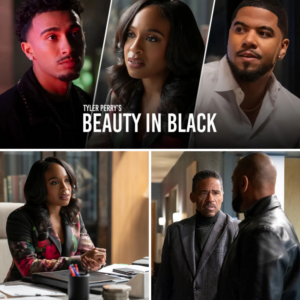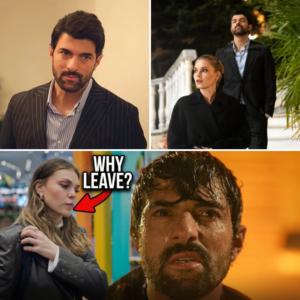In a chilling reminder of the city’s ongoing struggle with gun violence, a mass shooting erupted on Saturday night, August 9, 2025, in the Park Heights neighborhood of Northwest Baltimore, leaving six people wounded, including a 5-year-old girl who was shot in the hand. The incident, which unfolded just before 9 p.m. at the intersection of Spaulding and Queensberry Avenues, transformed a casual outdoor gathering—where residents were enjoying crabs and socializing—into a scene of chaos and terror. Police Commissioner Richard Worley described the event as sudden and unprovoked, with shooters approaching the group and opening fire without warning. As investigators hunt for suspects, the community grapples with fear, grief, and questions about how such violence continues to plague one of America’s most troubled cities.
The shooting comes amid a year of mixed progress in Baltimore’s fight against gun crime. While city officials tout historic reductions in homicides and nonfatal shootings through mid-2025, incidents like this underscore the persistent vulnerabilities in neighborhoods like Park Heights, long scarred by poverty, drugs, and gang activity. Drawing on police reports, witness accounts, community reactions, and expert analyses, this article delves into the details of the attack, its broader implications, and potential paths forward. We explore hypotheses on the motives, the role of Maryland’s gun laws, and systemic issues fueling urban violence, all while amplifying voices from a resilient yet weary community.
The Timeline of the Tragedy
The evening began innocuously in Park Heights, a predominantly Black neighborhood known for its tight-knit blocks and annual events like the Preakness Stakes horse race nearby. Around 8:46 p.m., as the sun set and families gathered outside for a summer tradition of cracking crabs, gunfire shattered the calm. According to Baltimore Police, multiple shooters—possibly two or more—approached the group on foot and unleashed a barrage of bullets. Witnesses described hearing rapid pops, initially mistaking them for fireworks, before screams erupted and people scattered.
Officers from the Northwest District arrived within minutes, finding six victims sprawled on the sidewalk and street. The wounded included a 5-year-old girl, shot in the hand while playing nearby; a 23-year-old woman; a 29-year-old man; a 36-year-old woman; a 41-year-old man; and a 52-year-old man in critical condition with multiple gunshot wounds. All were rushed to local hospitals, where the child’s injury was deemed non-life-threatening, but the oldest victim’s status remained precarious as of Sunday morning.
Commissioner Worley held a late-night press conference at the scene, flanked by detectives and community leaders. “This was a senseless act that targeted innocent people enjoying a beautiful evening,” he said, urging witnesses to come forward. No arrests had been made by August 10, but police recovered shell casings and were reviewing surveillance footage from nearby homes and businesses. The area was cordoned off overnight, with forensic teams combing for evidence under floodlights.
Victims and Immediate Aftermath
The victims’ identities remain withheld pending family notifications, but preliminary details paint a picture of everyday Baltimoreans caught in crossfire. The 5-year-old girl, whose hand was grazed by a bullet, has become a symbol of the shooting’s indiscriminate nature. Her mother, speaking anonymously to local media, described the horror: “We were just outside, like any other night. Now my baby is in the hospital, scared and hurt.” The 52-year-old man, reportedly a local elder known for mentoring youth, fought for his life in intensive care.
Hospitals like Sinai and University of Maryland Medical Center activated trauma protocols, with surgeons working through the night. By dawn, all but one victim were stable, but psychological scars loomed large. Community vigils sprang up Sunday, with candles lit at the intersection and prayers for healing.
Community Shock and Public Outcry
Park Heights, a neighborhood of about 30,000 residents stretching from Northern Parkway to the city line, is no stranger to violence. Once a thriving Jewish enclave in the early 20th century, it transitioned in the 1960s amid white flight and redlining, becoming a hub for Black families facing economic disinvestment. Today, it’s marked by vacant lots, corner stores, and churches, but also by resilient community organizations like Park Heights Renaissance, which works on revitalization.
Residents expressed outrage mixed with resignation. “This is our home—why can’t we just eat crabs in peace?” one neighbor told local media. On social media platform X, posts flooded in, with users sharing news links and hashtags like #BaltimoreShooting. Another user reposted news coverage, sparking debates on gun control. Discourses ranged from calls for stricter laws to criticisms of policing, with some alleging gang ties.
Mayor Brandon Scott, who has prioritized violence reduction, issued a statement: “Our hearts break for the victims, especially the child. We won’t rest until those responsible are held accountable.” Community leaders like Rabbi Yaakov Menken, from nearby synagogues, called for unity across racial lines.
Park Heights’ Troubled History with Crime
To contextualize this shooting, one must examine Park Heights’ crime legacy. From the 1980s crack epidemic to recent opioid crises, the area has been a hotspot for drug-related violence. High-profile cases, like the 2015 murder of Kendal Fenwick—a single father advocating against drugs—highlighted gang influences. In 2023, a documentary chronicled how Jamaican drug gangs operated here in the 1990s, leading to multiple homicides.
Baltimore Police data shows Park Heights consistently ranks high in violent crime rates. Theft per capita is elevated, and child abuse incidents correlate with poverty and trauma. Yet, revitalization efforts, including new housing and community centers, aim to break the cycle.
Baltimore’s Gun Violence Statistics: Progress Amid Persistence
Baltimore’s 2025 mid-year crime report paints a hopeful yet cautious picture. Homicides dropped significantly from 2024 levels, continuing a downward trend under Mayor Scott’s Group Violence Reduction Strategy. Nonfatal shootings decreased by over 20%, with auto thefts down 34% and robberies 22%. Through July 2025, the city recorded fewer gun-related deaths than in previous years.
Nationally, a mid-2025 update shows similar declines in urban areas, with Baltimore’s efforts—community policing and youth programs—cited as models. However, firearm homicides remain high, with 187 gun deaths statewide by June 2025, 45.5% homicides. Black youth bear the brunt, exposed to violence at rates far exceeding national averages.
Maryland’s Gun Laws: A Porous Framework?
Maryland boasts some of the nation’s strongest gun laws, ranking high in assessments. Background checks extend to rifles and shotguns, extreme risk protection orders allow temporary firearm removal from at-risk individuals, and concealed carry requires a permit with training. New 2025 laws, effective fall, mandate secure storage and expand dealer regulations.
Yet, enforcement gaps persist. Antique firearms are exempt, and trafficking from lax neighboring states undermines efforts. A Supreme Court decision in January 2025 upheld Maryland’s handgun licensing, but gun rights advocates push back. Experts argue stronger federal laws are needed.
Community and Policy Responses
Baltimore Police vow intensified patrols and tip lines. Mayor Scott pushes for federal aid amid fears of policy reversals. Experts advocate multi-pronged approaches: mental health support, education, stricter enforcement. Statewide, Maryland’s firearm violence dashboard tracks trends, aiding prevention. Programs reducing youth exposure by 20% show promise.
Community organizations like Park Heights Renaissance call for youth mentorship and job programs. “We need to give our kids a future, not a funeral,” said a local pastor at a vigil. National voices, including the American Psychological Association, urge family-based interventions to curb impulsivity and access to weapons.
A City’s Resolve Amid Heartbreak
As Park Heights mourns, residents like the victim’s mother plead: “We need change now.” This shooting, woven from history, policy gaps, and human frailty, demands action. In a city of contrasts—from the Inner Harbor’s gleam to Park Heights’ struggles—hope lies in collective will to end the cycle. The image of a 5-year-old girl, her hand bandaged, serves as a haunting call to action. Baltimore, bloodied but unbowed, must harness its resilience to ensure such nights of terror become relics of the past.




